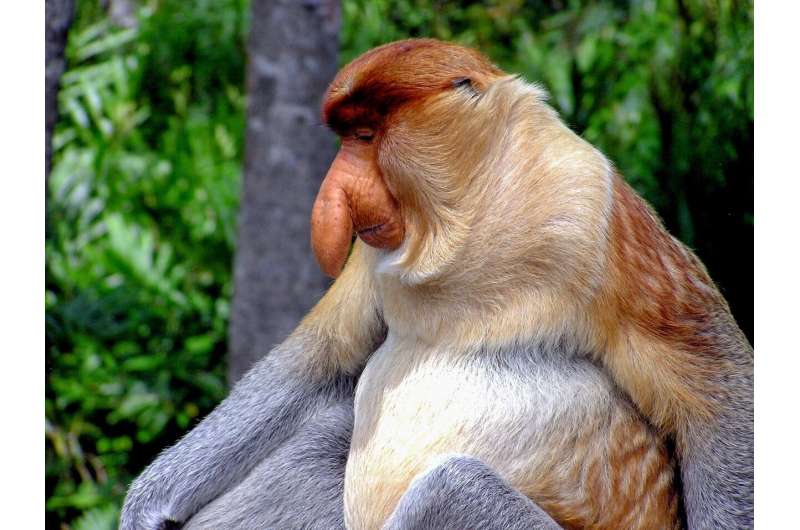Credit: Pixabay/CC0 Public Domain
When it comes to the animal kingdom, bigger is better, at least for proboscis monkeys, famously known for their long, large and droopy noses.
Researchers from The Australian National University (ANU) have provided a world-first explanation, published in Scientific Reports, for why male proboscis monkeys have larger and “enhanced” nasal structures.
The researchers examined the bony nasal cavity inside the skulls of proboscis monkeys and found that their large noses are more than just an eyesore, and in fact offer several major benefits, especially when it comes to attracting potential female partners.
Endemic to the island of Borneo, proboscis monkeys have unfortunately been branded one of the world’s ugliest animals, thanks to their large and unusual looking noses.
Lead author Dr. Katharine Balolia and former ANU masters student Pippa Fitzgerald used 3D scans of proboscis monkeys’ skulls housed in museum collections to take size and shape measurements of the internal structure of the primates’ bony nasal cavity. They found that the shape of the bony structure of the nasal cavity of male proboscis monkeys evolved to allow them to emit louder and deeper calls such as “honks and nasal roars.”
“We wanted to understand why male proboscis monkeys’ noses are so big, and whether their nasal cavities have a distinctive shape,” Dr. Balolia said. “We found that males have much bigger nasal cavities than female monkeys, and their nasal cavities also have a different shape compared to females.
2024-05-23 04:00:05
Original from phys.org
